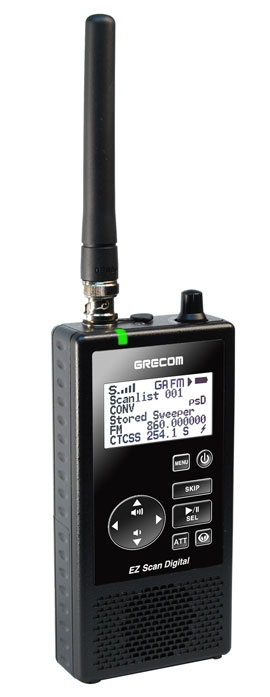- Grecom Port Devices Driver Download For Windows 10
- Grecom Port Devices Driver Download For Windows 7
- Grecom Port Devices Driver Download For Windows
This will enable your computer to communicate with audio devices such as speakers and sound cards. It is important to have a 64-bit version of a Windows operating system installed in your computer before downloading Realtek HD Audio Drivers x64. It can either be Windows Vista, Windows 7, Windows 8, or Windows 10.
Microsoft® ODBC Driver 13.1 for SQL Server® - Windows, Linux, & macOS. The Microsoft ODBC Driver for SQL Server provides native connectivity from Windows, Linux, & macOS to Microsoft SQL Server and Microsoft Azure SQL Database. Select Windows 10 x64 MTK USB Drivers.inf for 64-bit Windows or select Windows 10 x86 MTK USB Drivers.inf for 32-bit Windows. After selecting click on OK. From the Model list select MTK USB Port and click Next. If a warning window pops up, click on Install the driver software anyway.
-->This article helps to fix an issue in which Windows 10 doesn't install specific drivers for USB audio devices on the first connection.
Original product version: Windows 10, version 1703
Original KB number: 4021854
Symptom

When you connect a USB audio device to a Windows 10 Version 1703-based computer the first time, the operating system detects the device but loads the standard USB audio 2.0 driver (usbaudio2.sys) instead of the specific device driver.
Cause
This issue occurs because the USB audio 2.0 driver (usbaudio2.sys) isn't classified as a generic driver in Windows 10 Version 1703. Therefore, the system assumes that a compatible, nongeneric driver is installed for the device even though the driver is generic.
This issue also causes Windows 10 Version 1703 to postpone the search for other compatible drivers through Windows Update that typically occurs immediately after you install a new device.
Resolution
To fix this issue, use one of the following methods.
Grecom Port Devices Driver Download For Windows 10
Method 1
To resolve this issue, install update 4022716.
Method 2
If the device-specific driver is distributed through Windows Update, you can manually update the driver by using Device Manager. For more information about how to do this, see update drivers in Windows 10.
Method 3
If the device is not yet connected, first install the device-specific driver, such as by using the appropriate installer. After the device-specific driver is installed, Windows 10 will select that driver instead of the standard USB audio 2.0 driver when you first connect the device.
Note
See the device manufacturer's user guide for specific instructions about how to install the driver.
Method 4
If the driver isn't distributed through Windows Update, you can manually reinstall the driver. To do this, follow these steps:
- Install the device-specific driver (see Method 2).
- Open Device Manager.
- Right-click (or tap and hold) the name of the device, and then select Uninstall.
- Restart the computer.
When it restarts, Windows will try to reinstall the device by using the device-specific driver.
From The RadioReference Wiki
Note: For other PC Driven scanners, please see the Connection Issues Under Win 10.x Using the WS-1080 / 1095 article
Preparation
- Windows 10 update from 1511 to 1607
- EZScan needs to be uninstalled
- EZ Scan folder removed in 'My Documents' (probably better to rename it since this is where all your settings, scanlists and programming are stored)
- Reboot
Grecom Port Devices Driver Download For Windows 7
Procedure
Grecom Port Devices Driver Download For Windows
This procedure requires administrator privileges and connection to the Internet
- Download EZScanDGInstall_v1.08 from the greamerica.com web site, save it in a folder (e.g. named GRECOM) and unzip it in that folder. EZScanDGInstall_v1.08.exe will be created.
- Instruct Windows to boot into the 'Options' menu. Either click on the 'Power' button, hold down the 'Shift' key while clicking 'Restart or Run: shutdown.exe /r /o /f /t 00
- After rebooting into the “Options Menu”, click “Troubleshoot” and then “Advanced options”.
- On the next page, select 'Advanced Options'.
- Select the 'Startup Settings' to change the behavior of Windows Startup and then click restart or reboot on the next page.
- A menu with 9 selections will appear. Select number 7 or F7 to 'Disable Driver Signature enforcement'.
- Windows 10 will restart.
- Install the EZScan software by running the downloaded and unzipped EZScanDGInstall_v1.08.exe .
- Run the installed software and update it from inside to 1.9 Bld 301.
- Connect your PSR-800 scanner to the computer. Wait for the default driver installation, which is completed when a file explorer window with the scanner SD card contents pops up.
- Now correct the scanner driver. In the Device Manager, find the extra USB Communications Port assigned to the scanner under 'Ports (COM&LPT)'.
- Update the driver with this special procedure:
- 'Driver' tab
- 'Update Driver'
- 'Browse my computer for driver software'
- 'Let me pick from a list of device drivers on my computer'
- 'GRECOM PSR-800 Serial Device'
- 'Next'.
- If 'GRECOM PSR-800 Serial Device' is not shown then go back one screen and select 'Browse for driver software on your computer', type this file path: C:WindowsInfGRECOM_PSR-800.inf and click on 'Next'.
- If a warning screen about the risk of unsigned drivers appears, select the unsigned driver option because the PSR-800 driver is unsigned.
- Repeat the PSR-800 driver installation steps 10 - 14 for each physical USB port on your computer.
- You can verify the driver installation by checking in the device manager that now your scanner shows up under 'Ports (COM&LPT)' as 'GRECOM PSR-800 Serial Device'.
These instructions come from this thread
